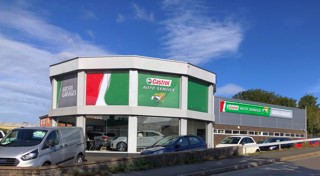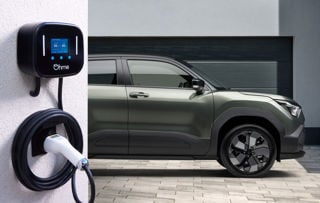Responding to an accelerated shift in consumer habits, the retail industry is continuing in its transition to offering new sales models and truly customer-centric experiences.
The automotive industry is no exception, learning from the agility of mass-market digital retailers and seeking new solutions to meeting consumers’ demand for a seamless purchase experience.
However, it’s clear that the shift towards the agency and direct-to-consumer sales models, for example, will not work for all parties.
It will take a lot of time for OEMs and retailers to decide if it is the right move for them, and if they do decide to move forward in that respect, it could take even longer to implement correctly.
For OEMs choosing the agency model, forecasts have shown that revenue streams fed by data could increase significantly over the next few years.
This will give manufacturers a prime opportunity to communicate add-ons such as new subscription services and vehicle accessories to consumers.
Studies have shown that their retailers could also see benefits such as reduced administration tasks and increased enterprise value.
Factors like this have already enticed leading OEMs including Mercedes-Benz to make the switch. But for every manufacturer who does, there are others who do not. For example, Kia have shared they see no benefit for consumers in changing to an agency model.
Ultimately, consumers prioritise their experience over any kind of sales model. And, at a time when – on top of this sales model shake-up – business costs and supply issues continue to cause blockers, it’s imperative that both OEMs and retailers do what they can to minimise disruption to the consumer experience during this period of change.
In an industry where agility and responding to consumer demand are becoming increasingly important, legacy solutions reliant on physical documentation can inhibit process efficiency and impact customer satisfaction.
Just as other digital retailers offer consumers purchase requirements and documents on a simple-to-use platform, customers in the automotive sector also need and expect a seamless, intuitive purchase experience.
Optimising the consumer journey and making customer interaction as simple as possible is key to leveraging sales opportunities.
As a central component of securing a vehicle purchase agreement, the primary way OEMs and retailers can do this is by prioritising technology that centralises information and facilitates effective communication.
Only when businesses implement a seamless flow of data and intel, will they be able to deliver maximum efficiency and this optimised consumer experience – whether that’s through agency, direct-to-consumer sales, or a traditional franchise model.
Intelligent cloud-based document management, for example, provides a centralised and secure location for completing, storing, and assigning key documentation to relevant parties.
Efficient management of internal processes is of course only half of the story; OEMs and retailers also need to be able to interact with consumers seamlessly in order to maximise customer satisfaction and retention.
Offering an intuitive consumer-facing interface for document management makes accessing key agreement documentation both simple and fast, and therefore even easier for customers and businesses to communicate with one another.
Making additional customer offerings – such as booking vehicle services and completing aftersales activities – available on the same platform will only enhance the consumer experience further.
OEMs and retailers need to alleviate the administrative challenges often associated with solutions that rely more on physical documents.
This will help them to optimise resource effectively, and therefore focus efforts on mitigating the barriers to success posed by prevailing industrial and economic circumstances.
Intelligent, intuitive cloud-hosted solutions for streamlining internal processes, as well as sales and aftersales documentation, will be key in enabling businesses to stay agile during this time of uncertainty.
Maintaining complete visibility and flexible permissions across the service suite with cloud-based technology empowers both OEMs and retailers to stay mobile, and at the same time boost customer satisfaction through consistent and direct consumer contact.
In an ever-more crowded market, where the complexities of the agency model are rife, it’s important that companies can optimise their day-to-day operations to deliver a smooth consumer experience, maintaining both loyalty and profitability in the process.
Author: Richard Johnston, chief revenue officer, Automotive Transformation Group (ATG)




















Login to comment
Comments
No comments have been made yet.